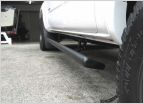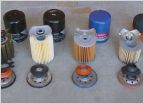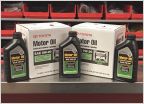-
Welcome to Tacoma World!
You are currently viewing as a guest! To get full-access, you need to register for a FREE account.
As a registered member, you’ll be able to:- Participate in all Tacoma discussion topics
- Communicate privately with other Tacoma owners from around the world
- Post your own photos in our Members Gallery
- Access all special features of the site
Blown Head Gasket/H G Replacement Thread
Discussion in '4 Cylinder' started by Murrfk, Mar 28, 2011.
Page 1 of 3
Page 1 of 3


 Where can i find automatic steps for a 05+ single cab.
Where can i find automatic steps for a 05+ single cab. Subaru "rumble" for our truck?
Subaru "rumble" for our truck? I4, first oil change
I4, first oil change Switching to synthetic oil
Switching to synthetic oil






































































